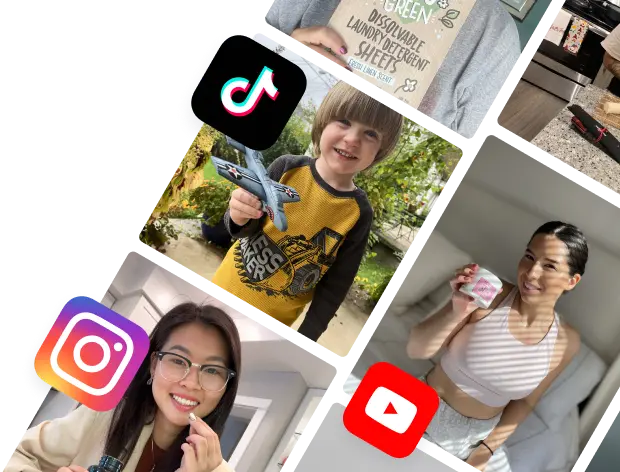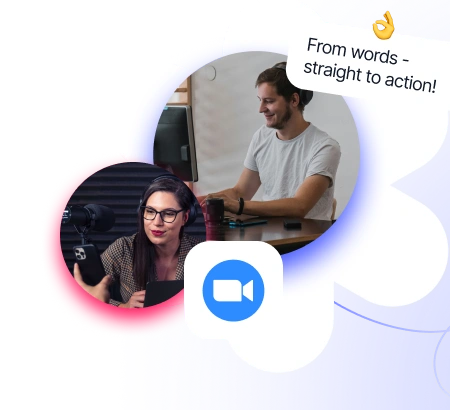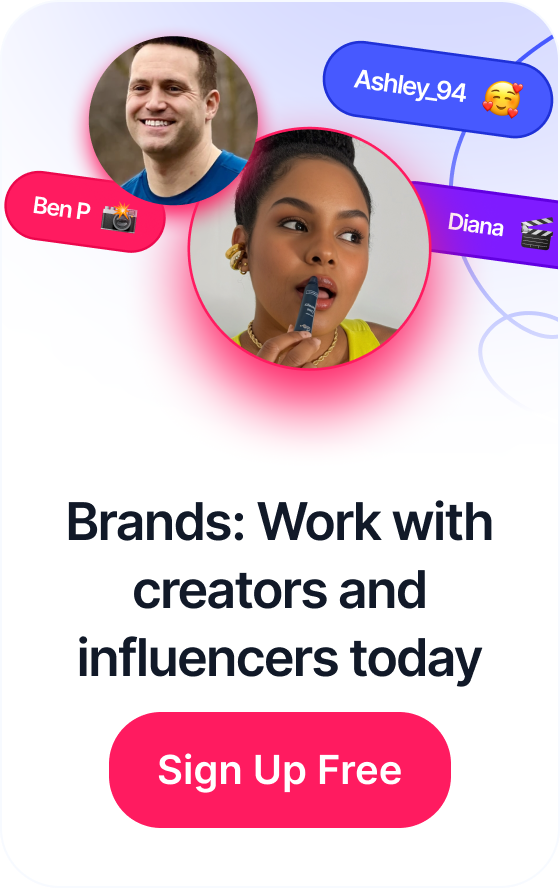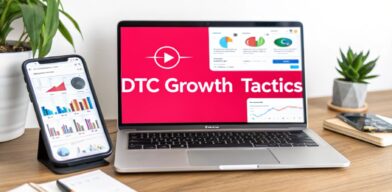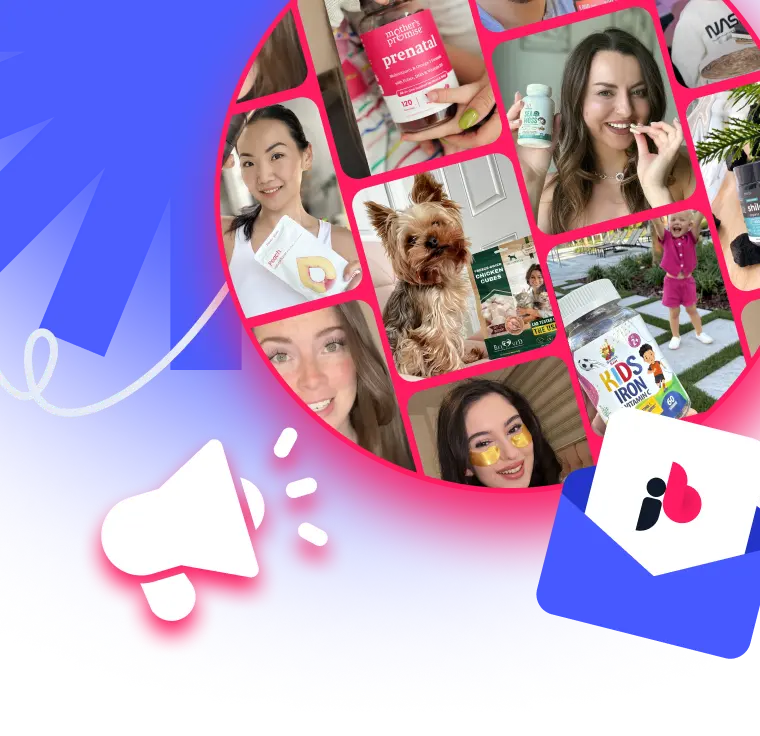 Boost Your Instagram Engagement Rate: Tips & Insights
Boost Your Instagram Engagement Rate: Tips & Insights
A multi-channel marketing campaign is all about meeting your customers where they already are. Instead of just focusing on one platform, you use several independent channels—like email, social media, paid search, and maybe even in-person events—to deliver a consistent brand message and cast a much wider net.
Table of Contents
Defining Your Multi-Channel Strategy
Before you dive in and start juggling a dozen platforms, it’s crucial to get a solid handle on what a multi-channel strategy really is—and just as importantly, what it isn’t.
Think of it like setting up shop in different parts of town. A customer might see your ad on Instagram while scrolling in the morning, get an email with a special offer in the afternoon, and then spot one of your paid search ads a few days later when they're ready to buy. Each channel works on its own to grab their attention, but they all point back to the same core message and offer.
This is a big step up from putting all your eggs in one basket with a single-channel approach (like only running Facebook ads). It's also a distinct step before an omnichannel strategy, which takes integration to a whole new level.
Understanding Key Marketing Approaches
To really clear things up, it helps to see these three marketing philosophies side-by-side. A single-channel strategy is focused and simple. A multi-channel strategy gives customers different, separate doors to walk through. And an omnichannel strategy connects all those doors into one smooth, seamless journey.
Here's a quick breakdown to highlight the differences.
Multi-Channel vs. Single-Channel vs. Omnichannel Marketing
| Attribute | Single-Channel | Multi-Channel | Omnichannel |
|---|---|---|---|
| Core Focus | Maximizing one platform | Brand presence and reach | A unified customer experience |
| Channel Integration | No integration | Channels work in parallel | Channels are fully integrated |
| Customer Experience | Siloed and limited | Consistent but disconnected | Seamless and interconnected |
Ultimately, a multi-channel approach is about giving people more ways to find and engage with you, on their own terms.
The fundamental goal of a multi-channel marketing campaign is to make it easy for customers to engage with your brand on their terms and on their preferred platforms. It’s about creating more touchpoints to build awareness and drive action.
The market for managing these campaigns is blowing up, mostly because the tech for connecting customer data has gotten so much better. For example, a staggering 67% of retailers now make it a priority to link their inventory systems directly with their campaign management tools.
This allows them to weave real-time product information right into their marketing messages across every channel. You can explore more about how businesses are using this technology to sharpen their multi-channel efforts.
This chart gives a great visual of how a brand might spread its audience reach across different platforms in a typical campaign.
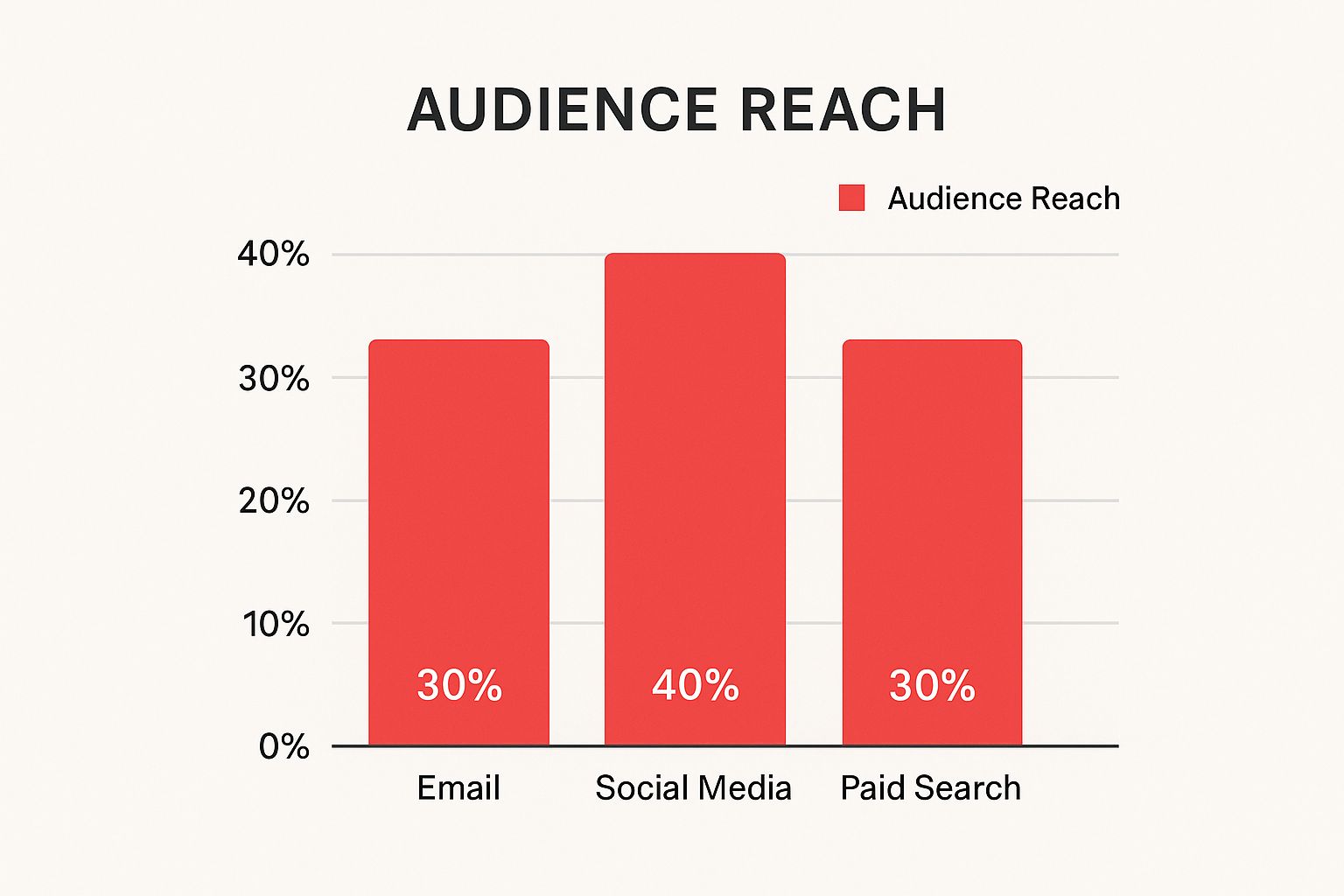
As you can see, no single channel carries all the weight. The real power comes from using a balanced mix of platforms to engage your entire target audience effectively. Once you get this foundational concept down, you’re ready to build a campaign that truly amplifies your message and hits your business goals.
Dig Deep to Understand Your Audience
A powerful multi-channel marketing campaign isn’t built on a whim or a lucky guess. It’s built on a rock-solid foundation: a deep, almost obsessive, understanding of who your customer is, where they hang out online, and what actually makes them tick. This goes way beyond basic demographics like age and city.

The real magic happens when you get into psychographics—their personal values, their biggest frustrations, and their digital habits. You need to know which social media app they’re scrolling through on their lunch break and which podcaster they trust for product recommendations. Getting this level of detail is how you create a campaign that genuinely connects instead of just adding to the noise.
Unlocking Actionable Customer Data
You’re probably sitting on a goldmine of information right now. Your existing data sources are full of clues, but the key is to stop looking at them in silos. Start connecting the dots between platforms to paint a full picture of your audience.
I always recommend starting with these three areas:
- Your CRM Data: Dig into purchase histories to find out who your most loyal customers are. Look for trends. What do they buy? How often? What's their average spend? This tells you exactly what your core audience loves.
- Social Media Analytics: Forget vanity metrics like follower counts. Dive into the audience demographics on Instagram, TikTok, or wherever you're active. Who is actually engaging? Pay close attention to the comments and DMs—that’s your audience telling you what they think, in their own words.
- Website Analytics: Follow the breadcrumbs on your site. Which blog posts are they reading from start to finish? Which product pages get all the clicks? Where are they bailing on the checkout process? This data points directly to their interests and any friction points you need to fix.
To really round out your understanding, you need to combine this hard data with more qualitative feedback. Exploring different market research types, like running customer surveys or focus groups, gives you a three-dimensional view of your customer that numbers alone can't provide.
Turning Raw Data into Dynamic Buyer Personas
Once you've collected all this info, it's time to bring it to life by creating buyer personas. These are essentially detailed, semi-fictional profiles of your ideal customers, but they're firmly rooted in the real-world data you just gathered. A good persona is much more than just a name and a job title.
A great buyer persona tells a story. It should detail your customer's daily challenges, their goals, the media they consume, and the specific language they use. This makes them feel like a real person your team is trying to help.
Let’s say you run a direct-to-consumer fitness apparel brand. You might create a persona called "Alex, the Busy Professional."
- Pain Point: Struggles to find time for the gym and needs workout clothes that are stylish enough for running errands.
- Channels: Gets fitness inspiration from Instagram and listens to productivity podcasts on the commute.
- Motivation: Cares about quality and sustainability; happy to pay a bit more for gear that lasts.
With this persona, your marketing strategy becomes crystal clear. You're not just "running some ads." You're reaching Alex on Instagram and through podcast sponsorships, with messaging that highlights how your gear's versatility and quality fit perfectly into their hectic life.
This detailed approach is becoming the industry standard, and the technology is evolving to support it. The market for multi-channel marketing hubs, the very tools needed to execute these campaigns, was valued at USD 6 billion recently. It's expected to grow at a compound annual rate of 17.7% over the next decade, which shows just how critical this strategy is becoming. You can dig into the numbers yourself by reviewing the complete market growth analysis.
Now that you have these deep insights, you’re equipped to choose the right channels to connect with your audience in a meaningful way.
Designing Your Cohesive Cross-Channel Message
Once you've dug deep into your audience research and really understand who you're talking to, it's time to get creative. This is the heart of your multi-channel marketing campaign: crafting the actual message. Think of it as the single, powerful story that will thread through every email, social media post, and ad you push live. A strong core message is your campaign's North Star—it keeps everything consistent and ensures every piece feels like part of a bigger, unified idea.
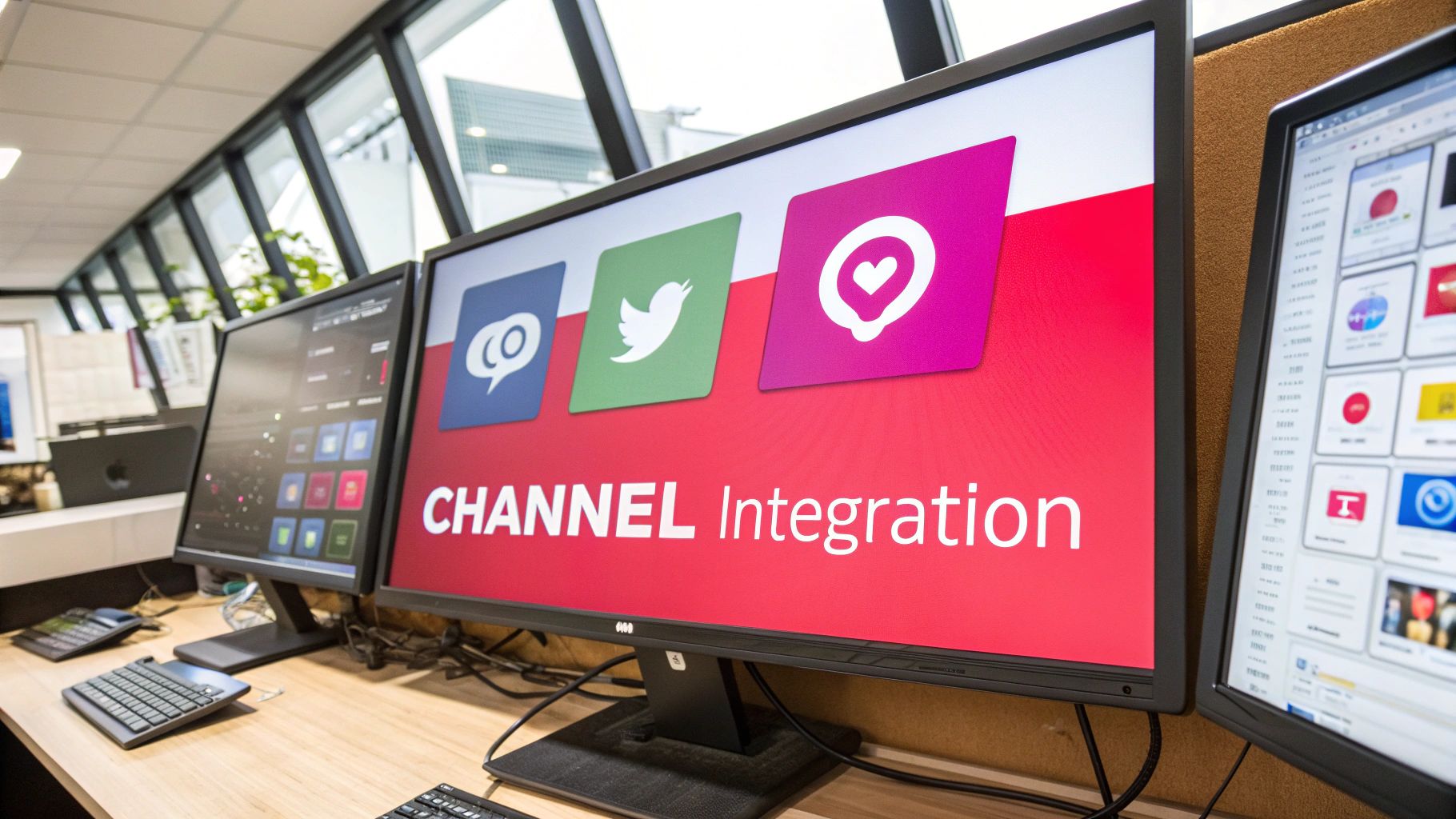
This isn't about copy-pasting the same line everywhere. Far from it. The real skill is learning how to take that central idea and mold it to fit the unique culture and format of each platform. It's about turning one core concept into a stunning visual for Instagram, a deep-dive guide for your blog, and a quick, punchy update for X (formerly Twitter).
Crafting Your Central Campaign Idea
Your central idea is the one thing you absolutely need your audience to walk away remembering. It has to be simple, sticky, and directly solve a pain point or tap into a desire you discovered during your research. It’s the "why" that powers your entire campaign.
A brand that nails this is the outdoor gear company, Patagonia. Their messaging often revolves around environmental activism and creating high-quality, long-lasting products. A campaign might be built on an idea like "Buy Less, Demand More." That simple phrase then becomes the guidepost for all their content.
To find your own, sit down and ask yourself these questions:
- What is the single biggest problem my product solves for my ideal customer?
- What specific emotion do I want my audience to feel when they see this?
- If they could only remember one thing from this whole campaign, what should it be?
Your answer to that last question? That’s the foundation of your message. It’s what gives your campaign focus and a clear sense of direction.
Adapting the Message Without Losing Consistency
With your core message locked in, the next challenge is translating it for each channel. This is all about being a good guest on every platform—you need to respect its unspoken rules and norms while staying 100% true to your brand. True consistency comes from your brand voice and visual identity, not from boring repetition.
Let's imagine your central idea is "Effortless Weekday Meals in 15 Minutes." Here’s how you could adapt that across different channels:
- Instagram Reels: A fast-paced, visually snappy video showing a meal being prepped and cooked in just a few seconds, all set to a trending audio track. The caption would be short, punchy, and loaded with relevant hashtags focused on time-saving.
- Blog Post: A detailed article titled "5 Healthy 15-Minute Dinner Recipes for Busy Professionals." This format is perfect for going in-depth with ingredient lists, step-by-step instructions, and even nutritional breakdowns.
- Email Newsletter: A direct message to your subscribers with a subject line like "Your Weeknight Dinner Dilemma—Solved." Inside, you'd feature one of the top recipes from the blog and include a clear call-to-action to buy the necessary products.
- Paid Search Ad: A super concise ad with a headline like "Quick & Healthy Meals. Ready in 15 Mins. Shop Now." The copy is all about getting straight to the point and driving an immediate click.
The secret to great adaptation is making the content feel completely native to the platform. The message—quick, easy meals—never changes, but the delivery is perfectly tailored to how people actually consume content on each specific channel.
This is how you build a campaign that feels both cohesive and contextually aware, building familiarity and trust at every single touchpoint.
A well-structured plan is crucial for adapting your message effectively. The table below provides a framework for how you might map out your content variations for a hypothetical campaign.
Channel-Specific Content Adaptation Plan
| Channel | Content Format | Tone of Voice | Primary Goal |
|---|---|---|---|
| Reels, Carousels, Stories | Aspirational, Trendy, Visual | Build brand awareness, foster community engagement | |
| Blog / SEO | Long-form articles, Guides | Authoritative, Helpful, In-depth | Drive organic traffic, establish thought leadership |
| Newsletters, Promotions | Personal, Direct, Action-oriented | Nurture leads, drive sales and repeat business | |
| X (Twitter) | Short updates, Polls, Threads | Conversational, Timely, Witty | Share company news, engage in real-time conversations |
| Paid Search | Text Ads, Shopping Ads | Direct, Benefit-focused, Urgent | Capture high-intent searches, drive immediate conversions |
| TikTok | Short-form videos, Trends | Authentic, Entertaining, Casual | Reach a younger demographic, go viral with trends |
Using a plan like this ensures every piece of content, no matter the channel, is purpose-driven and aligned with the overarching campaign goals while still feeling right for its environment.
Maintaining Brand Voice and Visuals
Your brand's personality has to shine through everywhere. Are you witty and informal? Or are you more authoritative and polished? Whatever your brand's voice is, stick to it. This consistent tone helps your audience recognize you in a split second, no matter where they are online.
The exact same rule applies to your visual identity. Your color palette, fonts, and logo placement must be consistent across every single campaign asset. This visual thread is what connects a TikTok video to a website banner, making them both instantly recognizable as yours.
This is where technology has become a game-changer. The power of multichannel marketing is exploding as more companies use AI-driven tools to create a single, unified view of the customer. In fact, some surveys show businesses that deploy these unified platforms see up to 50% higher ROI while also cutting down on operational costs. These tools are fantastic for maintaining consistency at scale. You can learn more about how AI is boosting campaign ROI and reshaping what's possible for marketers.
By meticulously planning your central message and how it gets adapted for each channel, you create a seamless and genuinely impactful customer journey. This is how you stop just "doing marketing" on different platforms and start building a powerful, unified campaign that delivers real results.
Executing and Automating Your Campaign Launch
A brilliant strategy is only half the battle. If your execution stumbles, even the most creative campaign can fall flat. This is where we shift gears from planning to doing—getting your multi-channel marketing campaign out the door smoothly and on schedule. Without a solid execution plan, great ideas can quickly turn into a chaotic mess of missed deadlines and mixed messages.

The idea here isn't to just manually blast content across a dozen platforms. That's a recipe for burnout. Instead, the goal is to build an integrated, automated system that does the heavy lifting for you. This frees up your team to focus on what humans do best: creative thinking, relationship building, and analyzing performance.
The Power of Marketing Automation Hubs
At the heart of any modern campaign execution is the marketing automation hub. Think of these platforms as the central nervous system for your entire multi-channel operation. They connect all your channels—email, social, ads, your website—and make sure everything fires off at the right time.
It’s basically your campaign’s air traffic controller. It coordinates everything from scheduling social media posts and sending email sequences to managing internal approvals. A solid automation platform is what ensures your content gets delivered consistently, preserving that cohesive brand experience you worked so hard to define.
The real win with automation isn't just saving time. It's about enabling smarter, more responsive marketing that adapts in real-time based on what your audience actually does.
For example, a customer who abandons their shopping cart doesn't have to be a lost sale. With automation, that action becomes an immediate, calculated touchpoint. An automated system can instantly trigger a follow-up email. If they still don’t bite, it can cue up a retargeting ad on their Instagram feed a day later. That’s a dynamic journey, not a dead end.
Setting Up Smart Campaign Triggers
An effective automated system runs on intelligent triggers. These are the "if this, then that" rules that bring your campaign to life, allowing you to create personalized experiences at scale. Your job is to map out potential customer actions and design automated responses that gently guide them toward your campaign goals.
Here are a few practical examples of smart triggers I've seen work wonders:
- Welcome Series Trigger: A new user subscribes to your newsletter. This single action kicks off a three-part email series automatically. The first email delivers the freebie they signed up for, the second shares your brand story, and the third highlights your most popular products.
- Behavioral Content Trigger: Someone reads a blog post about, say, "beginner photography tips." Your system can tag their profile with that interest. The next time they visit your site, a banner promoting your entry-level DSLR cameras appears. It feels helpful, not creepy.
- Engagement-Based Social Trigger: You notice a user frequently likes and comments on your Instagram posts. They can be automatically added to a "superfan" segment. This group can then be targeted with exclusive offers or early-bird access to new launches as a reward for their loyalty.
These kinds of automated workflows ensure your multi-channel campaign feels less like a series of static broadcasts and more like a dynamic conversation. To get these systems humming, you might want to see how marketing automation for small businesses can help you scale your efforts without scaling your workload.
Establishing a Coordinated Launch Workflow
Even with the best automation tools, a smooth launch needs a clear, documented workflow. This is non-negotiable, especially when you have multiple people involved—copywriters, designers, social media managers, and ad specialists. When everyone isn't on the same page, things fall through the cracks.
A proper launch workflow defines a few key things to keep everyone aligned and prevent bottlenecks.
Key Components of a Launch Workflow
| Component | Description | Why It's Important |
|---|---|---|
| Asset Production | This is the creation of all your content: ad creative, email copy, blog posts, social media visuals, etc. | Ensures all materials are ready before the launch date, preventing last-minute scrambles. |
| Approval Process | A clear, tiered system for reviewing and signing off on all campaign assets before they get scheduled. | Guarantees brand consistency and catches potential errors before they go live to customers. |
| Scheduling & Deployment | Loading all approved assets into your marketing automation hub and setting the launch schedule. | This is the final step that puts your plan into action, ensuring a coordinated rollout. |
| Post-Launch Monitoring | A short but critical period right after launch to check that all channels are live and working as expected. | Lets you quickly spot and fix any technical glitches, like broken links or ad disapprovals. |
By putting this structure in place, you turn the complex act of a multi-channel launch into a predictable, repeatable process. This kind of operational discipline is what separates high-impact campaigns from those that just don't deliver.
Hitting "launch" on your multi-channel marketing campaign isn't the end of the road. Honestly, it's just the beginning. The second your campaign goes live, the real work starts: tracking, measuring, and tweaking everything. This is where you turn raw data into smart decisions, transforming a pretty good campaign into an unforgettable one.
I see it all the time—marketers getting obsessed with vanity metrics. Things like social media likes or a ton of impressions. They look great on a report and feel good, but they don't actually tell you if you're making money or building your brand. It’s time to look past the surface-level fluff and dig into the Key Performance Indicators (KPIs) that really signal success.
Finding the KPIs That Actually Matter
To measure what's important, you first have to define what a "win" looks like for this specific campaign. Your goals dictate your KPIs. A campaign built for brand awareness will track completely different numbers than one designed to drive direct sales.
To get a real, unfiltered look at your campaign's health, you need to be watching these essential KPIs:
- Conversion Rate by Channel: This is the big one. It tells you exactly what percentage of people from a specific channel (like email or a paid ad) actually did the thing you wanted them to do—whether that's buying a product or signing up for a newsletter. A high conversion rate on one channel tells you it's a star player.
- Customer Acquisition Cost (CAC) by Channel: How much are you actually spending to get a new customer from each platform? Calculating this is crucial. It helps you find where you're wasting money and lets you move your budget to the channels that are giving you the best bang for your buck.
- Customer Lifetime Value (CLV): This metric forces you to think beyond that first sale. It helps you understand the total amount of money a customer is likely to spend with you over their entire relationship with your brand. A great campaign doesn't just bring in customers; it brings in customers with a high CLV.
- Overall Return on Investment (ROI): This is the ultimate bottom line. For every dollar you poured into this campaign, how many dollars did you get back? This KPI connects all your marketing work directly to revenue, leaving no room for ambiguity.
When you focus on these metrics, you get a crystal-clear picture of which parts of your multi-channel marketing campaign are killing it and which ones need a serious tune-up.
Building a Rock-Solid Tracking System
You simply can't measure what you aren't tracking. To get clean data on which channels are doing the heavy lifting, you need a tracking system that's consistent across your entire campaign. This doesn't have to be some overly engineered, complex setup, but it absolutely needs to be methodical.
The secret weapon here? UTM parameters. They are just small bits of text you add to the end of your URLs. They act like little breadcrumbs, telling your analytics tool—like Google Analytics—exactly where each visitor came from.
For instance, a UTM link might look like this, telling you a user clicked from your summer email newsletter:yourwebsite.com/product?utm_source=email&utm_medium=newsletter&utm_campaign=summer_sale
This is not optional. It’s the only reliable way to trace conversions back to their original source and truly understand which channels are moving the needle.
Without consistent UTM tracking across all your channels, you’re flying blind. You’ll see traffic and conversions roll in, but you'll just be guessing what caused them. It’s the difference between making informed decisions and just hoping for the best.
Once this data starts flowing into your analytics platform, you can create dashboards that show you your most critical KPIs at a glance. Suddenly, that mountain of data becomes a set of clear, actionable insights you can use to make adjustments on the fly.
The Never-Ending Cycle of Optimization
Data is completely useless if you don't do anything with it. The final, and most powerful, piece of this puzzle is creating a feedback loop where you use insights to make your campaign better and better. This is where A/B testing becomes your best friend.
A/B testing, also called split testing, is just a simple experiment. You create two versions of something—an email, an ad, a landing page—and see which one performs better. It takes all the guesswork out of the equation. And the best part of a multi-channel campaign is that you can test almost everything.
Think about all the opportunities you have to test across your different channels:
- Email Marketing: Test out different subject lines to see what gets more opens. Pit two different calls-to-action against each other. You can even test what time of day you send your emails.
- Paid Ads: Run different ad creatives (maybe an image vs. a video), try out a few headlines, or experiment with different audience targeting to see what resonates.
- Landing Pages: Test a bold new layout, a different headline, or even the number of fields in your sign-up form to see what converts best.
Let’s walk through a real-world scenario. You're running a campaign and notice your paid social ads have a fantastic click-through rate, but the conversion rate on the landing page is terrible. Your data is telling you the ad got their attention, but the page isn't closing the deal.
This is a perfect moment for an A/B test. You could create a second version of the landing page with a stronger headline and a more obvious call-to-action. Then, you send 50% of your ad traffic to the original page and 50% to the new one. After a week, you'll know for sure which one works better.
This cycle of Measure > Analyze > Test > Repeat is what turns a one-and-done campaign into a dynamic machine that gets smarter and more effective over time. If you commit to this process, you’re not just launching a campaign—you’re building an asset that will continue to deliver better results.
Common Questions About Multi Channel Marketing
Even with a rock-solid plan, jumping into a multi-channel campaign can feel a bit like spinning plates. You're bound to have some questions pop up. Let's tackle a few of the most common ones so you can keep moving forward with confidence.
One of the biggest points of confusion I see is the whole multi-channel vs. omnichannel debate. It's actually pretty simple when you break it down.
Think of it this way: multi-channel is about being present on different platforms. Your customers might find you on Instagram, get an email from you, and see your blog posts. Each channel works on its own, like separate storefronts.
Omnichannel is the next level. It weaves all those channels together into one fluid experience. A customer can start a journey on a social media ad, click through to your site, and get a follow-up email that picks up right where they left off. It’s all connected.
Choosing Channels and Setting Budgets
So, with countless platforms out there, how do you pick the right ones? The answer is always in your audience research. Don't try to be everywhere—that’s a surefire way to burn out. Instead, be where your customers actually hang out.
If your buyer personas live on TikTok and get their news from specific industry blogs, that’s your starting point. Focus your energy and resources where you can build real connections, not just shout into the void.
When it comes to budgeting for a multi-channel marketing campaign, there's no magic number. A good rule of thumb I always recommend is to start small, test aggressively, and then scale what's actually working.
Avoid the mistake of spreading your budget paper-thin across ten different channels. Instead, double down on the 2-3 primary channels you're most confident in. Use a smaller slice of the pie to experiment with one or two new ones.
Once the data starts rolling in, you'll see a clear picture of what's delivering the best ROI. From there, it's just a matter of reallocating your spend to the winners.
Avoiding Common Campaign Mistakes
Juggling multiple platforms is tough, and it’s easy for things to slip through the cracks. The most damaging mistake? Inconsistent messaging. Your brand's voice, tone, and core message have to feel the same everywhere, from a paid ad to an organic social post. When the experience feels disjointed, you erode trust.
Another classic blunder is simply ignoring the data. It's not enough to look at the overall campaign performance. You absolutely have to track how each individual channel is doing. This is the only way to know what's driving results and what's just costing you money.
Here are a few other pitfalls to keep on your radar:
- Forgetting Mobile Optimization: This is non-negotiable. A massive chunk of your audience will see your campaign on a smartphone. Every email, landing page, and social post needs to look and work perfectly on a smaller screen.
- Using a "Set It and Forget It" Approach: Great campaigns are living, breathing things. They need constant attention. Check your analytics regularly and be ready to pivot your strategy based on what the real-world data is telling you.
By staying mindful of these common slip-ups, you can keep your campaigns running smoothly and driving the results you’re after.
Ready to amplify your brand's voice with authentic content from a vast network of creators? JoinBrands connects you with over 250,000 TikTok Shop Affiliates, Instagram influencers, and UGC producers to accelerate your sales and social presence. Streamline your entire multi channel marketing campaign from creator matching to content approval, all on one powerful platform. Start your campaign today on joinbrands.com.

